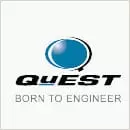The locomotive industry has been one of the fastest growing industries since time immemorial. Whether the locomotives are used for passenger transport or for the transportation of goods, these beasts require tremendous power and consume a lot of fuel. The industry has tried several ways to optimize each trip of the locomotives to make them more fuel-efficient and punctual.
After a lot of engineering and research, the attempts at optimization have reached a standstill. Now, to optimize the locomotives even further, researchers have started utilizing technologies from other fields.
The most common technology that is now being used in locomotives is wireless technology. With the help of wireless technology, the entire control of the locomotives can be optimized remotely. Here is a brief introduction of all the state-of-the-art onboard train control systems that are now being used in the locomotive industry:
Features of Trip Optimizers in Locomotives
These trip optimizers don’t function on their own; they can access a plethora of data collected by various locomotives and transmit the data from their own journey to the main server in the headquarters remotely. This is precisely where wireless technology comes in.
The trains aren’t connected to the main server directly. They use wireless technology to connect to all the data that help the trip optimizers make decisions while on autopilot or while controlling just brake and throttle.
Trip Optimization Using Wireless Technology
Wireless technology is used as a means of communication between the train control systems and the main servers of the locomotive company. These servers have all kinds of information about the functionality of the said train, including the number of bogeys attached to the train, the total weight that the locomotive has to pull, the total power of the locomotive, number of brakes, and any other kind of information that might help the train optimizers to make decision when they control the train.
Almost all kinds of wireless technologies are implemented in different locomotives depending upon their function and the distance from the main server. If the locomotives are traveling to varied distances, the latest 4G-eLTE platforms are used as they provide low latency transmission link between the locomotive and the server. But, if the locomotives don’t require a connection to the main server and have a local data backup, they can just use simple Wi-Fi technology to connect to the stored data.
Internet of Things (IoT) is also one of the major technologies used in all these locomotives. With the help of IoT, the trip optimizer systems are able to control the mechanical parts of the locomotive. They can control the throttle and braking systems. As all these systems are completely mechanical, IoT is used to digitalize them and easily connect them to the trip optimizer system so that it can control them.
Conclusion
Technology is making huge strides not just in the IT industry, but other industries as well. IoT and other wireless technologies are being used in almost all mechanical systems to optimize them and make them smart. The same is being done in the locomotive industry. Soon, all the locomotives would be remotely controlled and the requirement of manual interaction would be drastically reduced.
